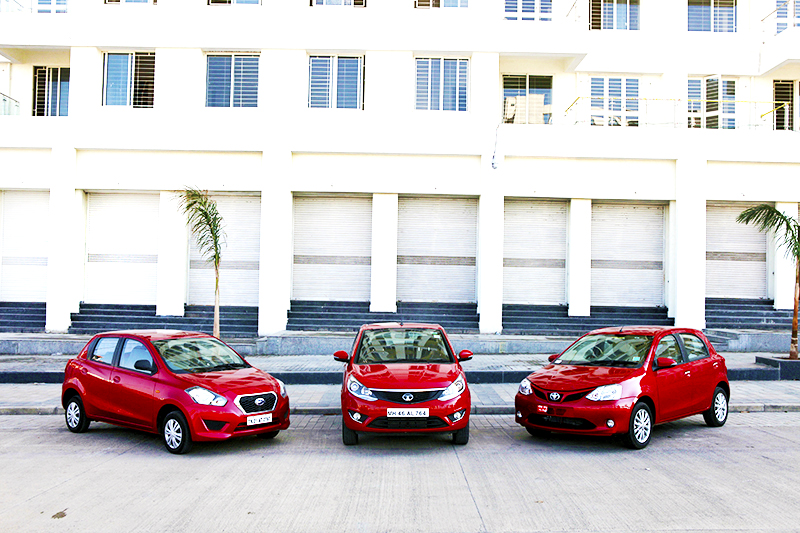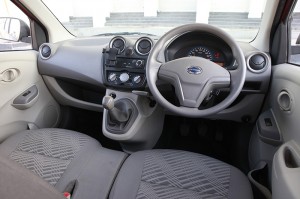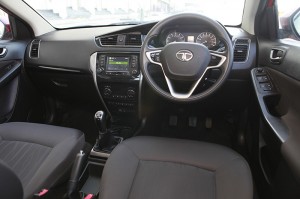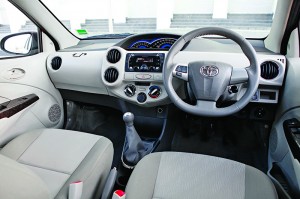So far as features are concerned, the Tata Bolt takes the cake as it has a long list of them that are not common in this segment. A snazzy infotainment system, power windows all over, automatic folding mirrors, automatic climate control, steering-mounted controls and more make the Tata Bolt a treat for the geeks.
Toyota is second by default because basic features such as an audio system, steering-mounted controls and parking sensors are present, but apart from those, there aren’t more features that the Liva can offer.
Lastly, the Datsun Go is loaded with, well, nothing much. Austerity is seen at its starkest in the Datsun Go since it comes with nothing much in terms of features, even the top-end variant. All you get is an instrument console, a flimsy steering wheel, a hand-brake that can break your knee as well as jam your hand while shifting, four seats (two bench-seats, in reality), and a plastic dashboard.
Safety-wise, Toyota clearly wins over the other two cars since all the variants of the Liva are offered with dual airbags and two of its four models also come equipped with ABS. This clearly shows Toyota’s commitment to safety. The Bolt also has ABS and airbags, but only in the top two variants get dual airbags whereas ABS is available in the top three variants. This makes it a pretty good deal in terms of safety aids and comparatively safer than the Go, because, in the case of the Datsun, it seems that safety has taken a back-seat, or, maybe, it just jumped out of the window. Datsun do not offer any airbags on any of the variants nor do they offer ABS. Moreover, the structural integrity of the Go is compromised, as proven by the international crash test body, NCAP. To get a fair idea of how safe, or not, the Datsun Go is, simply Google ‘Datsun Go NCAP test’, and you will know. Besides, Datsun are offering just straps mounted on the C-pillar in the name of “rear seat-belts”.
























Leave a Reply